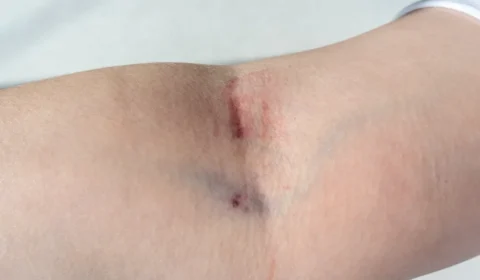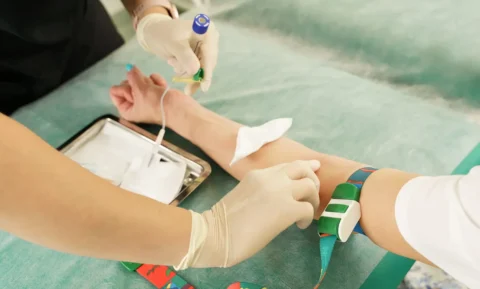Many wellness centers and clinics offer a combination of ultrasound cavitation and radiofrequency (RF). The procedures are used in tandem to remove unwanted body fat without surgery. The ultrasound and RF waves break down the fat while tightening the skin around the target areas. Due to its popularity and effectiveness, more specialists are offering this combined treatment package.
But where can you get ultrasound cavitation and radiofrequency body contouring training? There are many online and on-site providers that offer short courses and classes to help you acquire the necessary skills. To ensure you get a satisfying learning experience, look for an institution that caters to both beginner and more experienced technicians.
Where to Get Training
With online training centers being more common nowadays, there are many institutions that offer hybrid courses. These learning setups combine digital materials with regular on-site lectures. These courses allow ultrasound and RF technicians to pace their theoretical learning by themselves, with the physical discussions serving as demonstrations and assessments.
It’s common for courses to cover other similar cosmetic procedures, like laser hair removal, PRP, and microneedling. If you want to focus on ultrasound cavitation and RF body contouring, you can look for certification courses specific to these procedures.
Training Centers
Training centers are still the most common provider of aesthetic courses. Some have physical offices that serve as the location for classes. Others hold the courses in auditoriums and other venues throughout the country. Training centers are usually owned and set up by professionals with aesthetic experience as well. Some also serve as lecturers for topics that they’re experts in.
Despite being more traditional, many centers now offer a hybrid approach to learning. There are ultrasound cavitation and RF body contouring courses that combine at-home student learning with physical lectures. Learners are provided a checklist of all major topics, with the physical classes focused on demonstrations and assessments.
Topics covered in training center courses include:
- Basics of ultrasound cavitation and RF contouring
- Business operations for clinics
- Discussions on frequencies and amplitudes
- Health and safety
- Machine maintenance
- Patient screening and aftercare
For instance, many ultrasound training centers are operated by interventional radiologists or physicians. There are also aestheticians that have set up training centers specifically for body sculpting. It’s common for these centers to offer their courses at varying levels, with each one focusing on a specific level of expertise.
Some centers allow learners to enroll in one-on-one practical training sessions, although these have an additional cost. One-on-one sessions are available only in specific months of the year, due to the availability of instructors.
In some states, training centers require students to be licensed doctors, nurses, or aestheticians. You may be asked to provide a copy of your license upon enrollment. Once you complete the course, you’ll receive a certificate. Manuals, leaflets, and other resources are included in most course packages. These may have both physical and digital versions.
Short Courses
Schools, shops, and even hospitals also hold short courses for those interested in aesthetic treatments. Much like training centers, they invite licensed practitioners to train professionals who want to administer ultrasound cavitation and RF body contouring. Since these courses are usually shorter, they focus more on live demonstrations and practice sessions. Basic topics are covered in the provided learning materials which you can take home after the course.
There are community colleges, medical schools, and other educational institutions that hold training and seminars for a small fee. The facilitators are usually doctors or nurses part of the school faculty. Some schools offer courses that are creditable for state board requirements.
Hospitals also hold short courses facilitated by their doctors. These are usually part of conferences and seminars that focus on new aesthetic treatments. It’s more likely for these courses to include other similar cosmetic procedures. Much like other courses, they also have live demonstrations and practice sessions. Depending on the availability of instructors, some may offer follow-up sessions to interested students.
Recently, accredited medical supply shops have started offering short courses. These range from completely online courses to hybrid training modules. Online courses may either cover the principles of ultrasound and RF treatments or serve as refreshers for experienced practitioners. Hybrid modules combine self-study guides with in-person demonstrations and assessments.
Training Manuals
Besides courses, some institutions sell training manuals for professionals. These are usually meant for those operating newer machines. These manuals help experienced practitioners familiarize themselves with the latest technological advancements for ultrasound and RF treatments. Some of these also contain updated information on contraindications and side effects.
There are some publishers that release full-length textbooks about ultrasound cavitation and radiofrequency contouring. If you want to learn more about these treatments on your own, these books can serve as a crash course for the basics. However, these won’t equip you with the practical skills needed to administer the procedure.
Certification Exams
In some areas, an aesthetician license is required for non-medical professionals who want to administer ultrasound and RF treatments. Some centers hold review and refresher courses to people who’ll take the licensure exam. You may also look for practice tests that simulate the exam. Depending on the state, you can also ask the state cosmetology board if they offer free refreshers.
Topics in Ultrasound Cavitation Training
Regardless of where you get your training, the basics are always covered. These include an overview of the history of ultrasound, procedure guidelines, and important health protocols. In hybrid courses, these are covered in detail by the self-study or online materials.
History of Ultrasound
Courses will cover the origins of using ultrasound in cosmetic treatments. In most materials, ultrasound fat cavitation was first used in clinics in Italy. Its viability as an alternative to liposuction helped it become a popular procedure across Europe. In the 2000s, its effects in body contouring were studied, leading to its FDA approval in the United States. Additionally, this topic may also cover the current approved uses for ultrasound.
Principles of Cavitation
Also known as ultrasonic cavitation, this procedure works by breaking down the fat deposits in the body. It’s less invasive than liposuction since it doesn’t require any cuts or incisions. This claim is supported by research, and is a key discussion point in most training sessions. Some courses include a comparison of cavitation with other fat reduction treatments.
Health, Safety, and Data Protection
In fat cavitation training courses, you’ll also learn about basic health and safety protocols. These include orienting your patient about the necessary treatment protocols, such as maintaining weight and following a low fat diet in the days before the procedure.
Your training course materials will also discuss the conditions that will prevent potential clients from undergoing the procedure. Some examples are HIV, cancer, kidney failure, and epilepsy. In relation to this, some data security protocols will also be covered regarding patient confidentiality.
Cellulite and Fat Assessment
Ultrasound cavitation is used to remove cellulite and unwanted body fat cells. But before proceeding with the treatment, you must first check if the patient’s condition is suitable for the procedure. Courses will talk about the compatible skin types and fat content, as well as the ideal treatment sites.
Hygiene and Sterilization
A crucial aspect of your training is hygiene. Although there are no incisions involved in the treatment, there is still a small chance of contamination in the materials. Most course resources will go over the proper sterilization techniques for all ultrasound equipment. During live demonstrations, proper hygiene before treatment is also included.
Topics in Radiofrequency Body Contouring Training
Radiofrequency skin tightening and body contouring goes hand-in-hand with ultrasound cavitation. But in training modules, these are taught separately. This allows you to learn the fundamentals of each procedure before combining them in a single treatment.
1. Consultation Basics
Many RF modules begin by discussing the proper protocols for consultation. Besides history taking, this includes proper screening and other patient guidelines. You’ll also be taught about patient demographics and answering their frequently asked questions. Some courses also include sample patient forms and leaflets that you can use as references.
2. Radiofrequency Basics
The core of a body contouring course is the basic principles. You’ll be taught about the relationship between collagen production and RF skin tightening. Additionally, the underlying physics of the procedure will be discussed. In live demonstrations, you’ll be taught the proper techniques and handling of equipment.
3. Skin Histology
In skin histology, you’ll get a refresher of the microscopic anatomy of the skin. Understanding the different layers will help you visualize the processes that allow for RF fat removal. Skin histology covers the cells, tissues, and the organization of the different layers. You’ll learn about the different processes and reactions that happen within the epidermis and dermis.
4. Facial Contouring
Facial contouring techniques may be different for some skin types. Some modules will have a section specifically for discussing common facial lines, and how contouring can help remove them. Usual subtopics include skin tightening, brow lines, crow’s feet, and other wrinkles.
5. Cellulite Reduction
Much like ultrasound cavitation, radiofrequency is also used to reduce the appearance of cellulite. This topic discusses the different forms of radiofrequency that target cellulite. Your course instructor may also recommend some scientific literature about the relationship of RF waves with cellulite.
6. Customizing Client Treatments
Although both ultrasonic fat cavitation and RF treatments have clear procedural guidelines, the exact treatment cycle can differ per client. Some may need fewer or more sessions, depending on the severity of their condition. This topic discusses the considerations you should take in creating a treatment plan for your client.
FACE Med Store: Your Source for High Quality Medical Supplies and Online Courses
Learning how to become a technician for these treatments takes proper training and education. It’s important to find contouring and fat cavitation training courses that cater to your preferred learning style. Make sure to find a course that matches your preferences, and has the support of high-quality instructors.
At FACE Med Store, we offer online courses that can help you learn about various cosmetic treatments. All our courses have the support of equipped medical and aesthetic professionals. For more information, you may browse our course catalog or send us an email at info@facemedstore.com.






